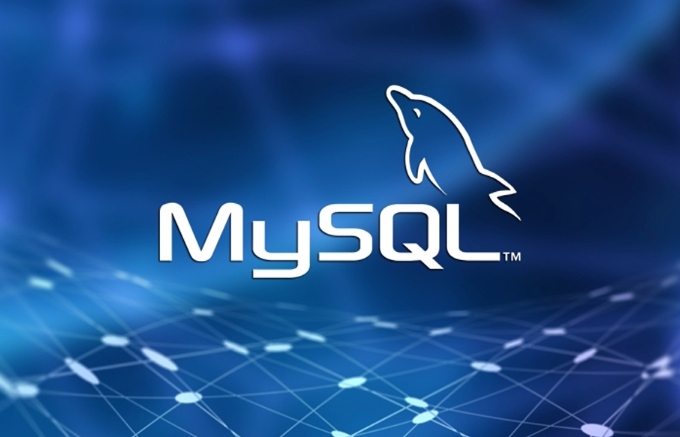Planning and Executing a MySQL Database Upgrade
Jul 06, 2025 am 02:17 AMThe key to upgrading MySQL database is to clarify the purpose, do backup tests, perform key checks and upgrade step by step. 1. Clarify the purpose of the upgrade (such as performance and security) and select the appropriate version (such as 5.7 to 8.0), and check the compatibility instructions; 2. Make a full backup and simulate the upgrade in the test environment to ensure application compatibility; 3. Check the hardware, database objects, logs and installation method configurations; 4. Perform the upgrade in stages, stop the application first, run the script according to the document and restart the service, and then restore the traffic after confirming that it is correct.

Upgrading a MySQL database sounds a bit complicated, but in fact, as long as you plan properly and execute carefully, it can be completed smoothly in most cases. The key is to prepare in advance, understand the risk points, and follow the steps.

1. Clarify the purpose of the upgrade and version selection
Before you start, ask yourself: Why do you need to upgrade? Is it to obtain new features, improve performance, or fix security vulnerabilities? MySQL version is updated frequently, and there may be large differences between different branches (such as 5.7 to 8.0), especially system table structure, default configuration, and syntax changes.

- If you are currently using 5.7, upgrading to 8.0 is a common requirement.
- Pay attention to check the official compatibility instructions, especially reminders about abandoned functions.
- Don’t blindly pursue new things, choose a stable version that has been verified and well-supported by the community.
2. Prepare for backup and test environment
This is the easiest to be overlooked but also the most critical link. Once an error occurs during the upgrade process, the ability to restore data depends on whether you have a complete backup.
- Use
mysqldumpor physical backup tools such as Percona XtraBackup for full backup. - In a non-production environment, first simulate the entire upgrade process and observe whether there are any errors or behavior changes.
- Test whether the application is properly connected to the new version of the database, especially the ORM framework or stored procedures.
Some companies will build a test environment that is almost consistent with the production environment and are specifically used for drills and upgrades. Although it takes a little time, it can greatly reduce risks.

3. Perform key checks before upgrading
Upgrade is not done in one click. If the preliminary inspection is not in place, it may lead to failure in the middle or abnormal service after the upgrade.
- Ensure that the server hardware meets new version requirements such as memory, CPU, and disk space.
- Check whether there are incompatible objects in the current database, such as using removed syntax or functions.
- Check log files and error information to eliminate potential problems that affect the escalation process.
If you are using a package manager installation (such as apt or yum), it is recommended to update the source configuration first; if it is a source code compilation and installation, pay attention to the path and permission settings.
4. Perform upgrades in step by step and monitor status
When actually performing an upgrade, it is recommended to advance in stages rather than replace them all at once.
- Stop application access first to ensure that the database is in a controllable state.
- Step-by-step execution of upgrade scripts according to the official documentation, such as running
mysql_upgrade. - After the upgrade is completed, restart the service and check whether all plug-ins and functions are loading normally.
Do not send traffic in immediately after upgrading. You can manually connect to the database and execute some common queries. After confirming that there is no problem, you can gradually restore the service.
Basically that's it. MySQL upgrade seems to have many steps, but in fact, each step is not difficult. The key is that you cannot skip any details. Make good plans and leave enough time to test, so that many problems can be discovered in advance.
The above is the detailed content of Planning and Executing a MySQL Database Upgrade. For more information, please follow other related articles on the PHP Chinese website!

Hot AI Tools

Undress AI Tool
Undress images for free

Undresser.AI Undress
AI-powered app for creating realistic nude photos

AI Clothes Remover
Online AI tool for removing clothes from photos.

Clothoff.io
AI clothes remover

Video Face Swap
Swap faces in any video effortlessly with our completely free AI face swap tool!

Hot Article

Hot Tools

Notepad++7.3.1
Easy-to-use and free code editor

SublimeText3 Chinese version
Chinese version, very easy to use

Zend Studio 13.0.1
Powerful PHP integrated development environment

Dreamweaver CS6
Visual web development tools

SublimeText3 Mac version
God-level code editing software (SublimeText3)
 Handling NULL Values in MySQL Columns and Queries
Jul 05, 2025 am 02:46 AM
Handling NULL Values in MySQL Columns and Queries
Jul 05, 2025 am 02:46 AM
When handling NULL values ??in MySQL, please note: 1. When designing the table, the key fields are set to NOTNULL, and optional fields are allowed NULL; 2. ISNULL or ISNOTNULL must be used with = or !=; 3. IFNULL or COALESCE functions can be used to replace the display default values; 4. Be cautious when using NULL values ??directly when inserting or updating, and pay attention to the data source and ORM framework processing methods. NULL represents an unknown value and does not equal any value, including itself. Therefore, be careful when querying, counting, and connecting tables to avoid missing data or logical errors. Rational use of functions and constraints can effectively reduce interference caused by NULL.
 Performing logical backups using mysqldump in MySQL
Jul 06, 2025 am 02:55 AM
Performing logical backups using mysqldump in MySQL
Jul 06, 2025 am 02:55 AM
mysqldump is a common tool for performing logical backups of MySQL databases. It generates SQL files containing CREATE and INSERT statements to rebuild the database. 1. It does not back up the original file, but converts the database structure and content into portable SQL commands; 2. It is suitable for small databases or selective recovery, and is not suitable for fast recovery of TB-level data; 3. Common options include --single-transaction, --databases, --all-databases, --routines, etc.; 4. Use mysql command to import during recovery, and can turn off foreign key checks to improve speed; 5. It is recommended to test backup regularly, use compression, and automatic adjustment.
 Calculating Database and Table Sizes in MySQL
Jul 06, 2025 am 02:41 AM
Calculating Database and Table Sizes in MySQL
Jul 06, 2025 am 02:41 AM
To view the size of the MySQL database and table, you can query the information_schema directly or use the command line tool. 1. Check the entire database size: Execute the SQL statement SELECTtable_schemaAS'Database',SUM(data_length index_length)/1024/1024AS'Size(MB)'FROMinformation_schema.tablesGROUPBYtable_schema; you can get the total size of all databases, or add WHERE conditions to limit the specific database; 2. Check the single table size: use SELECTta
 Aggregating data with GROUP BY and HAVING clauses in MySQL
Jul 05, 2025 am 02:42 AM
Aggregating data with GROUP BY and HAVING clauses in MySQL
Jul 05, 2025 am 02:42 AM
GROUPBY is used to group data by field and perform aggregation operations, and HAVING is used to filter the results after grouping. For example, using GROUPBYcustomer_id can calculate the total consumption amount of each customer; using HAVING can filter out customers with a total consumption of more than 1,000. The non-aggregated fields after SELECT must appear in GROUPBY, and HAVING can be conditionally filtered using an alias or original expressions. Common techniques include counting the number of each group, grouping multiple fields, and filtering with multiple conditions.
 Handling character sets and collations issues in MySQL
Jul 08, 2025 am 02:51 AM
Handling character sets and collations issues in MySQL
Jul 08, 2025 am 02:51 AM
Character set and sorting rules issues are common when cross-platform migration or multi-person development, resulting in garbled code or inconsistent query. There are three core solutions: First, check and unify the character set of database, table, and fields to utf8mb4, view through SHOWCREATEDATABASE/TABLE, and modify it with ALTER statement; second, specify the utf8mb4 character set when the client connects, and set it in connection parameters or execute SETNAMES; third, select the sorting rules reasonably, and recommend using utf8mb4_unicode_ci to ensure the accuracy of comparison and sorting, and specify or modify it through ALTER when building the library and table.
 Implementing Transactions and Understanding ACID Properties in MySQL
Jul 08, 2025 am 02:50 AM
Implementing Transactions and Understanding ACID Properties in MySQL
Jul 08, 2025 am 02:50 AM
MySQL supports transaction processing, and uses the InnoDB storage engine to ensure data consistency and integrity. 1. Transactions are a set of SQL operations, either all succeed or all fail to roll back; 2. ACID attributes include atomicity, consistency, isolation and persistence; 3. The statements that manually control transactions are STARTTRANSACTION, COMMIT and ROLLBACK; 4. The four isolation levels include read not committed, read submitted, repeatable read and serialization; 5. Use transactions correctly to avoid long-term operation, turn off automatic commits, and reasonably handle locks and exceptions. Through these mechanisms, MySQL can achieve high reliability and concurrent control.
 Connecting to MySQL Database Using the Command Line Client
Jul 07, 2025 am 01:50 AM
Connecting to MySQL Database Using the Command Line Client
Jul 07, 2025 am 01:50 AM
The most direct way to connect to MySQL database is to use the command line client. First enter the mysql-u username -p and enter the password correctly to enter the interactive interface; if you connect to the remote database, you need to add the -h parameter to specify the host address. Secondly, you can directly switch to a specific database or execute SQL files when logging in, such as mysql-u username-p database name or mysql-u username-p database name
 Managing Character Sets and Collations in MySQL
Jul 07, 2025 am 01:41 AM
Managing Character Sets and Collations in MySQL
Jul 07, 2025 am 01:41 AM
The setting of character sets and collation rules in MySQL is crucial, affecting data storage, query efficiency and consistency. First, the character set determines the storable character range, such as utf8mb4 supports Chinese and emojis; the sorting rules control the character comparison method, such as utf8mb4_unicode_ci is case-sensitive, and utf8mb4_bin is binary comparison. Secondly, the character set can be set at multiple levels of server, database, table, and column. It is recommended to use utf8mb4 and utf8mb4_unicode_ci in a unified manner to avoid conflicts. Furthermore, the garbled code problem is often caused by inconsistent character sets of connections, storage or program terminals, and needs to be checked layer by layer and set uniformly. In addition, character sets should be specified when exporting and importing to prevent conversion errors






